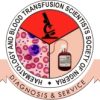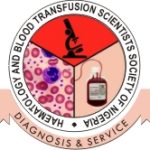doi.org/10.59708/ajlhts.v2i4.2338
| Download PDF - 57 Downloads
Performance evaluation of the Hemotype SCTM rapid test for the diagnosis of sickle cell disease
Diallo Issiaga, Adje Missa Louis, Salifou Talassone Bangoura, Yayo Aye Mireille Kadio Jean-Jacques Olivier Kadio, Sidibé Sidikiba, Sawadogo Duni
1 Faculty of Health Sciences and Techniques, Gamal Abdel Nasser University, Conakry, Guinea
2 Hematology Laboratory University Hospital Yopougon Abidjan
3UFR Pharmaceutical and Biological Sciences Université UFHB Abidjan
4 Center for Research and Training in Infectious Diseases of Guinea (CERFIG)
Email address:
issiagahady@gmail.com (Issiaga Diallo*), adjemissa@gmail.com (Adje Missa Louis), talassone.bangoura@cerfig.org (Salifou Talassone Bangoura), yayoaye@yahoo.fr (Yayo Aye Mireille), olivier.kadio@cerfig.org (Kadio Jean-Jacques Olivier Kadio), layesidikiba@gamail.com (Sidibé Sidikiba) dunisawadogo@gmail.com (Sawadogo Duni)
Abstract
Introduction: The use of Rapid Orientation Diagnostic Tests (“RODTs”) could play an important role in the mass screening of certain diseases. It saves a great deal of time while managing the flow of samples and the difficulties associated with their storage. This study aimed to identify the impact of the delay between sampling and analysis on the analytical performance of the Hemotype RODT SCTM.
Methods: This was a descriptive cross-sectional study conducted over one month. The Immunology-Hematology Department of the CHU de Cocody served as the study setting. The study population consisted of sickle cell patients and hemoglobin C carriers of all ages and sexes. We performed hemoglobin electrophoresis on all samples on the day of collection (D0) and the Hemotype SCTM rapid test on D0, D2, D4, and D6. Sensitivity and specificity were used to determine analytical performance, and the chi2 test was used to compare qualitative variables.
Results: The study involved 102 patients with a median age of 16 years (IQR: 9-24). Half of the participants (56.96%) were SSFA2 homozygous sickle cell disease major. On average, 87.1% of RODT results were valid from D0 to D6. At D0, the RODT had a sensitivity of 75% and a specificity of 81.40% for Hb A; Hb S had a sensitivity of 79.80% and a specificity of 100%; Hb C had a sensitivity of 35.71% and a specificity of 98.65%. The sensitivity of Hb C and the specificity of Hb A had increased statistically significantly over time. Cross-referencing the RODT results from D0 to D6 with those of electrophoresis showed a concordance of 86.95% for the AA phenotype, 79.52% for AS; 88.52% for SS; and 95.45% for SC.
Conclusion: The HemoTypeSC™ test, with a sensitivity of 75% and specificity of 98% is suitable in certain areas where access to electrophoresis is limited. This performance is not impaired on samples stored for 6 days.
Keywords: Evaluation, HemoTypeSC, Sickle cell disease, Hemoglobin

